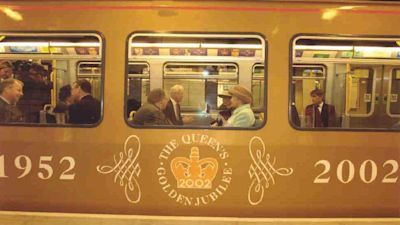The Sunderland Metro line celebrates its 20th anniversary

The Tyne and Wear Metro’s Sunderland line is celebrating its 20th anniversary, having carried 138 million customer journeys since it first opened to the public two decades ago.
Nexus, which owns and manages Metro, said the line was a huge success story for Sunderland, and one which has provided a vital strategic link into the heart of the city.
The £100m line was opened on 31 March 2002. It was then officially opened by Her Majesty The Queen in a ceremony at Park Lane Interchange on 7 May that same year.
In the 20 years since opening there has been 138 million journeys on the route, providing key connectivity to places of work and leisure.
Chief Operating Officer at Nexus, Martin Kearney, said: "The Sunderland Metro line has been such a success – carrying 138 million customers since it opened – and we are delighted to be celebrating its 20th anniversary.
"A huge amount of work went into winning government support for the project and then all of the construction phase that followed. What is there today is testament to all the hard work that was put into winning funding and making the scheme a reality.
"We look forward to the future and to our first new Metro trains running on the line next year.”
The £100 million project to construct the new line began in the summer of 2000. It branched off from the original Metro tracks at Pelaw in South Tyneside before continuing down through Sunderland City centre and on to the terminus station of South Hylton.
The Metro route into Sunderland runs for 14km over existing railway track to a point just beyond Sunderland Station before covering 4.5km of new track along the former Sunderland to Durham rail line between Sunderland Civic Centre and South Hylton.
In a first for the UK, Metro services between Pelaw and Sunderland share the route and track with heavy rail traffic.
Twelve Metro stations were added to the system to accommodate the extension. Eight of these stations: Fellgate, Stadium of Light, St. Peter's, Park Lane, University, Millfield, Pallion and South Hylton were newly built, while improvements were made to the four existing rail stations at Brockley Whins, East Boldon, Seaburn and Sunderland.
Metro services provide a seamless journeys into Sunderland for work, shopping and leisure, and outward journeys to Newcastle Airport and links to mainline rail services from Central Station in Newcastle and links to hundreds of bus services travelling throughout the North East region.